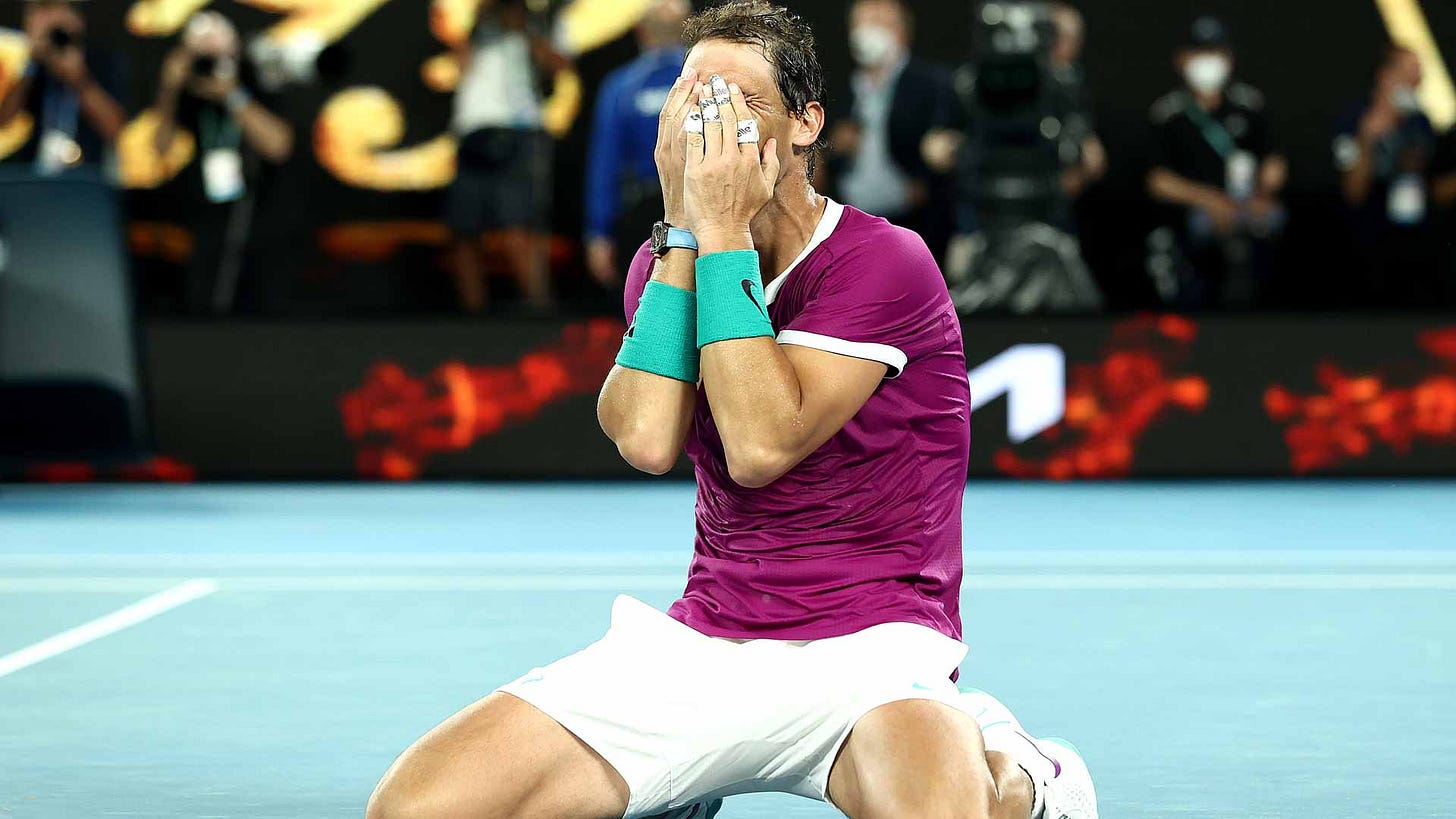How old is too old?
This week Rafael Nadal won the Australian Open, becoming the most successful men’s singles player with 21 grand slam titles. He is 35.
Tom Brady also announced his retirement from professional football. He is 44. He was the oldest ever Superbowl player last year (and his team won).
We are seeing more athletes sailing past 30 (and even 40) while staying competitive, raising questions about when we consider people to have “peaked” and what people can really expect in terms of lifetime fitness.
For a long time, athletes were taught to see 30 as a bit of a wall, and to start looking for a lifeplan B soon thereafter. But last month, two long-distance runners in their late 30s set records.
Gymnast Chellsie Memmel made headlines last year when she came out of retirement at age 31 to compete again. Gymnastics is notorious for terrifyingly intense coaching of its (particularly female) participants, partly driven by the idea they have an extremely narrow age window to be competitive (“older gymnasts” is those over 20…).
If we start to believe there isn’t such a narrow window, that athletes can have time to develop and still be competitive, that will change how many sportspeople view their careers. If we didn’t think they had to reach peak competitiveness at 18, we might not see so many teenage girls with torn ACLs.
Right now, across lots of sports, players are continuing to play past “normal” retirement ages.
Of pro team sports, baseball seems to have the highest number of players who keep going into their 40s and 50s. Yes, some of them were back in the sepia knickerbocker days of 1910, when fitness levels weren’t as high, and you could go up to bat while smoking a cheroot, or whatever. But quite a few weren’t. Satchel Paige played his last game at 59, in 1965.
Ice Hockey, which I would hardly have thought kind to old bones, has had its fair share of mature players too: Gordie Howe was still playing at 52.
But how do we define “normal” retirement age? In sports where players turn pro in their late teens or early 20s, a fair number of them will wash out relatively quickly: conversely, those who make it past the first few years might well stick around for a decade or more.
In a team sport, the decision can be made for them. You get dropped by your team, there may not be another willing to hire.
In a sport like tennis, for those who aren’t cracking the top 100, or attracting much sponsorship income (and thus having to pay for all their travel, coaching etc out of their prize money), retirement is likely to make sense. Better a steady income as a coach or club pro.
There’s another element for women of course, time out to have babies can sidetrack a career. The New York Times ran a piece last year about professional ballerinas taking the pandemic window - a forced career pause - as a chance to have a baby.
The injuries that decades ago were sidelining athletes, people are more able to recover from thanks to improvements in surgery. Sports science has come a long way in understanding training regimes. And more people, from Gen X on down, are saying “no” to age expectations, and pushing themselves to keep on.


